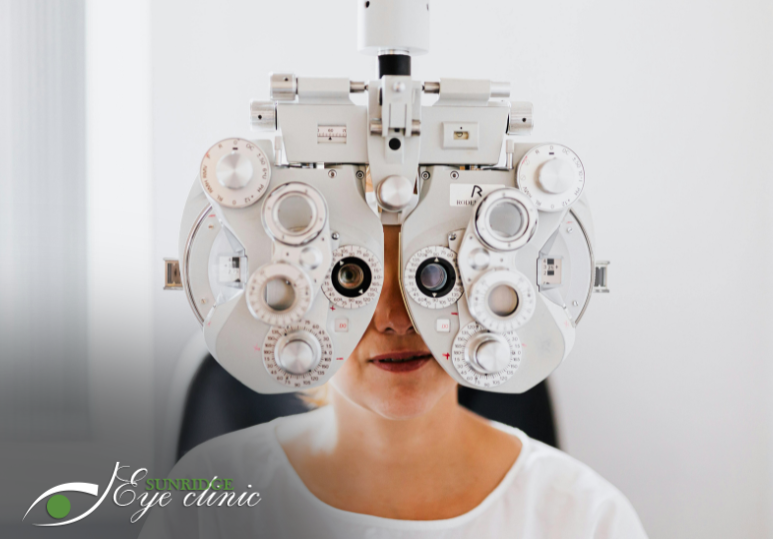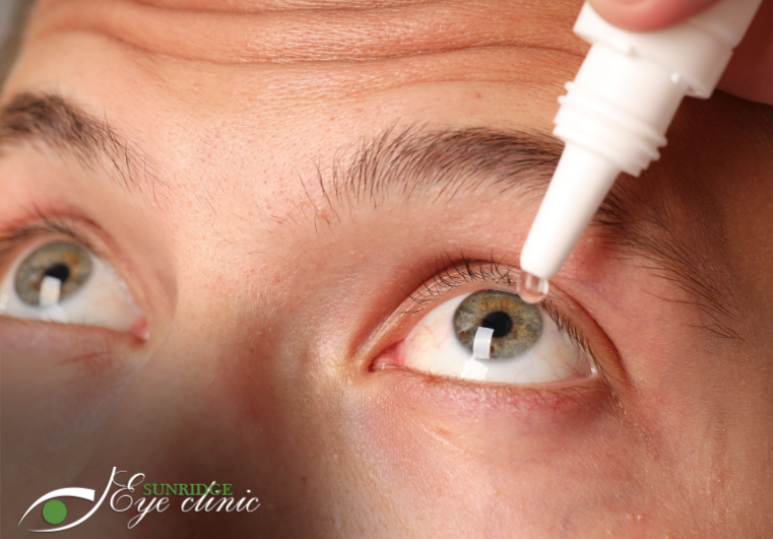What AMD Is And How Your Optometrist Can Treat It
What Is Age-Related Macular Degeneration (AMD)?
The macula is a small part of the retina at the back of the eye. Although it is only about 5mm across, this part of the eye controls central vision. This is the type of vision is used most often, as it is the very middle of vision that sees fine detail. When the macula becomes damaged and central vision is impaired, it severely limits a person’s ability to make out details or perform basic tasks such as driving, reading, or distinguishing faces. AMD is an eye condition that affects the macula and causes damage to the central vision while leaving peripheral vision unaffected. The reason this eye condition is referred to as “age-related” is because it typically develops later in life, often after age 60, and age is suspected to be a major factor in the development of this condition. There are 2 types of AMD:
- Dry AMD
This is the most common form of AMD, composing approximately 90% of all cases. Dry AMD progresses slowly over time, often taking years to impact vision. This form of AMD will begin to develop before it shows any symptoms, and by the time symptoms do develop, they are irreversible. Dry AMD can be detected in its early stages during eye exams and can be caught before serious damages occur. - Wet AMD
This type of AMD is far less common and it can develop out of dry AMD or spontaneously. Wet AMD develops very quickly and can cause damage to the eye in a matter of days. This form of AMD is caused when blood vessels under the macula bleed or leak. When layers of the retina swell with blood, they can stop functioning and lead to central vision loss.
Treatment From Your Optometrist
While there is no cure for AMD, there are ways your optometrist can help slow the progression of this condition. Dry AMD may require some lifestyle changes. You will likely require some ocular vitamin supplements that you will need to take regularly. Another important factor for reducing the progression of AMD is healthy living, including regular exercise, a healthy diet, and limiting tobacco consumption. Your optometrist will also recommend ways of protecting your eyes such as wearing UV-blocking sunglasses. If you have wet AMD, you will likely need to receive an injection of medication into the eye. These injections will help to stop the leaking of blood vessels in the eye. Whether your AMD is wet or dry, you and your optometrist will work together to create an AMD action plan and monitor your AMD. Read 5 Healthy Habits To Lower Your Risk Of AMD to learn how you can take preventative measures to ensure prolonged eye health.
Have AMD Screening From A Calgary Optometrist
Since there is no way for you to know if you have AMD before irreversible symptoms develop, you need to schedule regular eye exams. At an eye exam, your optometrist will check for signs of AMD as well as signs of other eye conditions. If you are 65 or over, you should receive a senior’s eye exam once a year, and potentially more frequently if you have an eye condition that needs to be monitored. If you are diagnosed with AMD, your optometrist will work with you to create an AMD management plan to slow the progression of this condition. The sooner your AMD is caught, the greater chance you have of preserving your central vision. To book a senior’s eye exam, contact Sunridge Eye Clinic in Calgary at 1-403-280-7518 or fill in the online contact form.
FAQ
Q: What are some early signs of Macular Degeneration?
A: Some early symptoms of AMD are:
- Blurred vision, especially in the middle of your sight
- Straight lines appearing wavy and distorted
- Objects looking ‘fuzzy’
- Increased sensitivity to glaring light
Q: Who is most at risk for developing AMD?
A: AMD commonly develops in people 60 years of age or older. Your risk of developing AMD also increases if you smoke, have frequent UV exposure, or lead a sedentary lifestyle. There is also a suspected genetic predisposition to AMD and you are more likely to develop this condition if a parent also had it.
Q: How can I improve my nutrition to help prevent AMD?
A: Eating plenty of fruits, vegetables, and healthy fats while avoiding salt, sugar, and processed fats will help you lower your risk of developing AMD. Learn what specific foods and nutrients are good for your eyes by reading Save Your Vision Month: Eat Your Way To Healthy Eyes.






